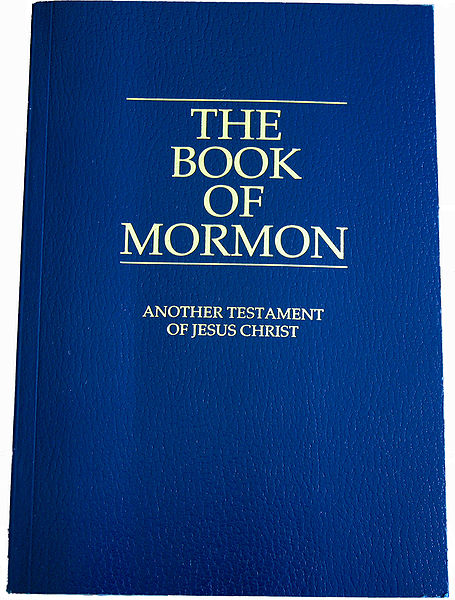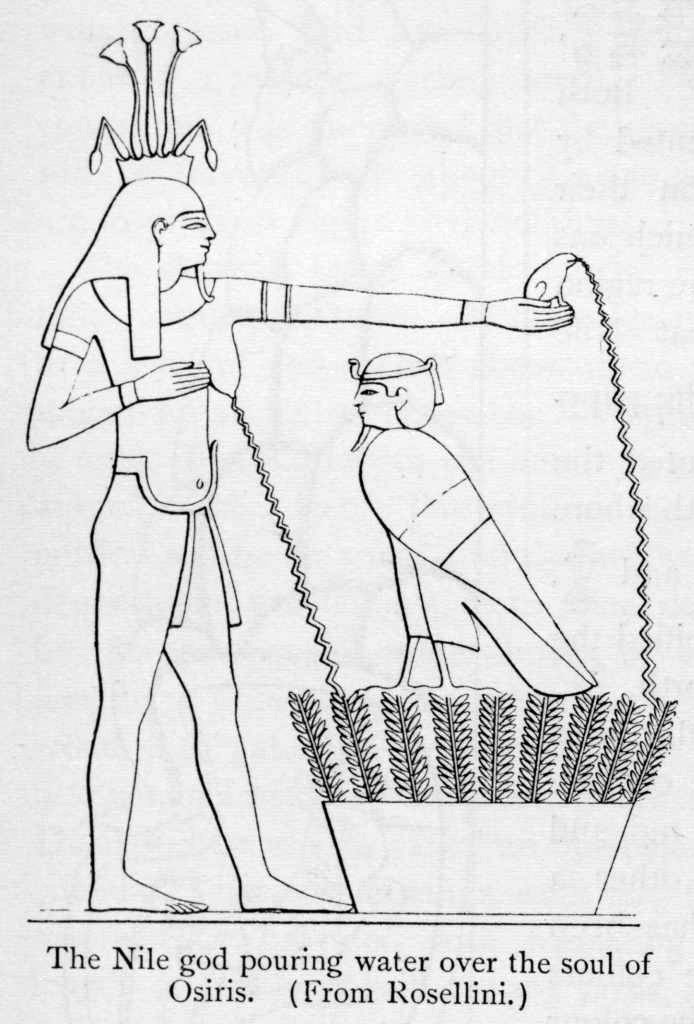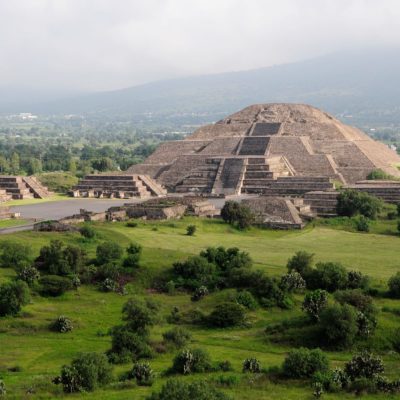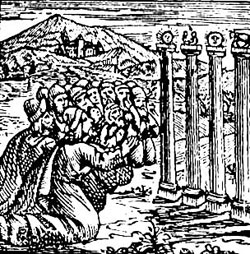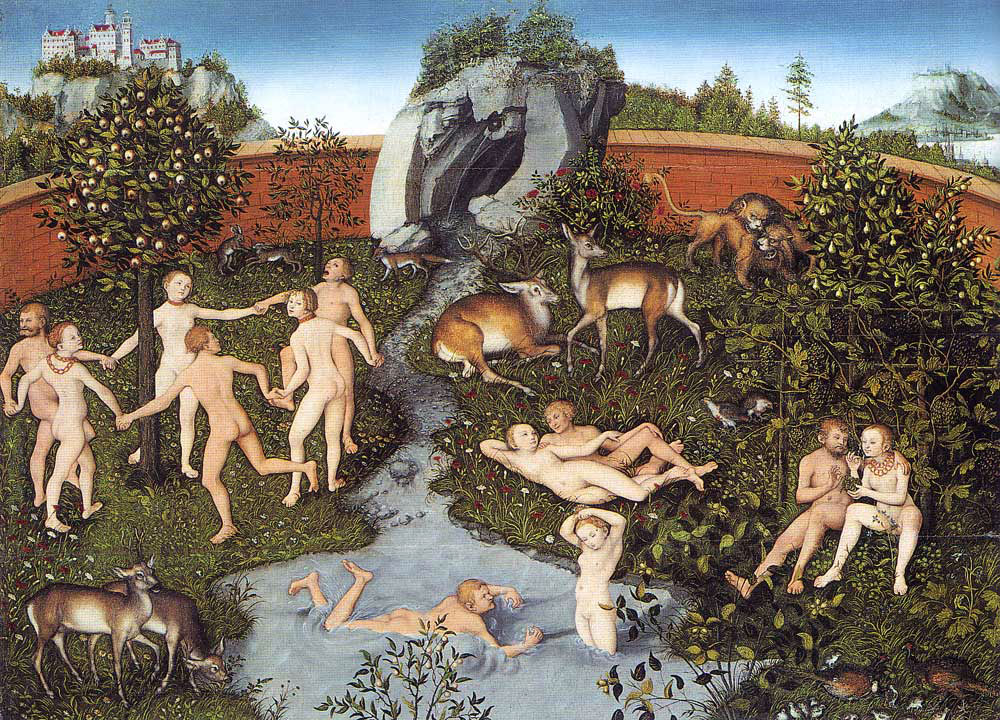Just as there are a lot of different kinds of Christians, there are a lot of different kinds of Mormons. Depending on which kinds are being compared, Mormonism can be a fair amount like Christianity, or completely outside it.
But even when Mormonism is a fair amount like Christianity, it’s still a huge amount not like it.
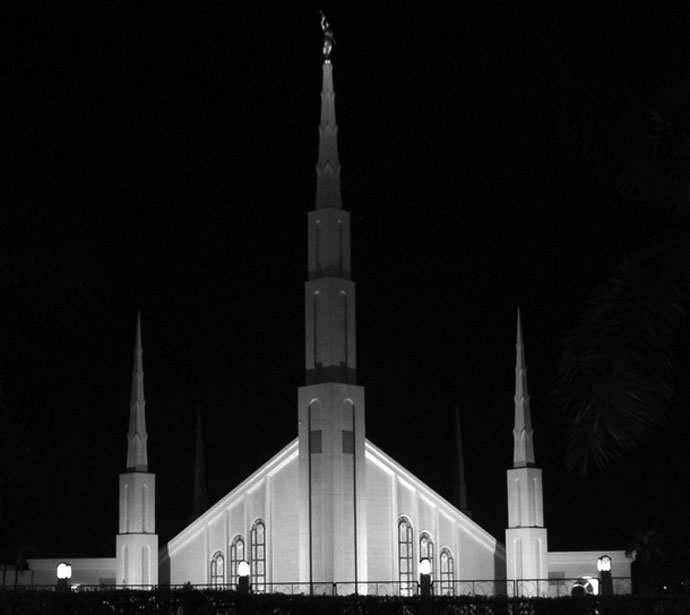
source
Mormons accept the Old Testament and the New Testament (King James version) as relatively valid, but include belief in some other Mormon-related documents on an equal footing. In fact, they believe that because the Bible has been so corrupted over the years, the Book of Mormon is an equal or better authority, since it was, they believe, overseen by God to restore the “lost truths” of the Bible.
Mormonism’s founder, Joseph Smith, Jr., said that the Book of Mormon is the “most correct” book of scripture, that “a man would get nearer to God by abiding by its precepts, than any other book,” and that Mormonism was the “only true and living Church.” (Smith also believed that God is a very advanced man with a throne situated near a star named Kolob. He said it was revealed to him that the Garden of Eden was in Missouri, as will be the Second Coming of Christ. He also believed that, if Mormons acquire the right information and go through the correct rites and annointings (including wearing the correct underwear) they can become equal to God).
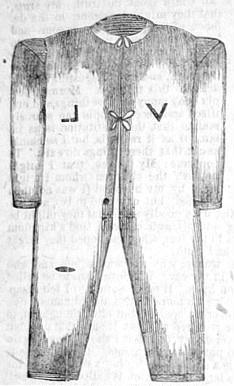
source
The Book of Mormon has been translated into 83 languages, with 150 million copies printed and given away. It purports to be written by prophets who lived in the Americas from circa 2600 BCE to 421 CE, telling the story of a people that God led from Jerusalem to the Americas 600 years before the birth of Jesus.
According to the Book of Mormon, Jesus visited the Americas after his death and resurrection, where he reiterated the teachings of the gospels and founded a (temporarily) peaceful civilization. Some Mormon scholars equate this Jesus with Quetzalcoatl, the great bearded white god of Mesoamerica who came from the sky, and left by sailing over the sea into the sunset (or, some say, the other direction) in a boat he built out of snakes, promising to return.
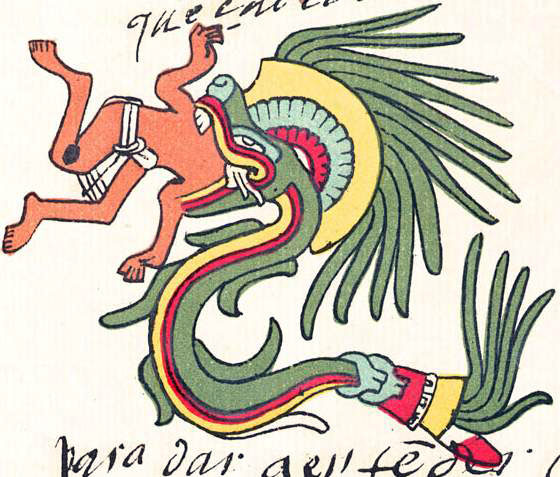
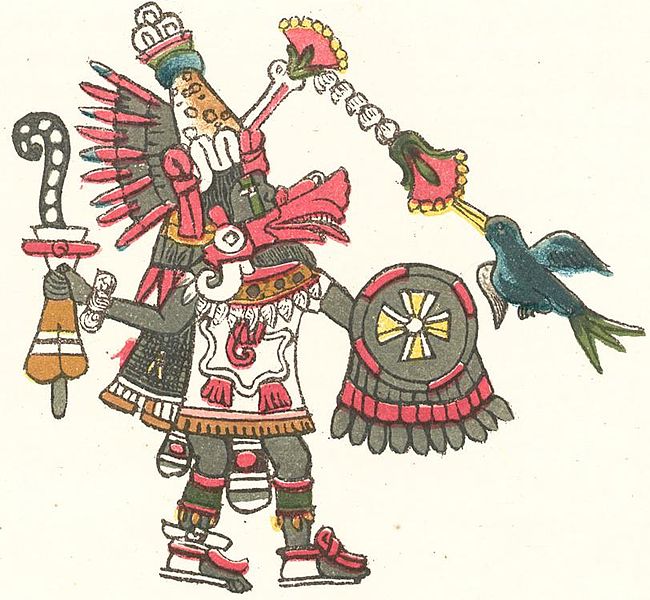
source
Where did the Book of Mormon come from? Even a lot of Mormons have trouble believing the answer, and prefer to think of it as an allegory or a vision, or something.
It all started in 1820 in Palmyra, New York, when Joseph Smith, Jr., prayed to God, asking which denomination of Christianity he should join. In a scene with stunning similarities to modern alien encounters (History of Joseph Smith, the Prophet, History of the Church, Volume 1, Chapter 1, Verses 11-20), God and Jesus appeared and told Smith that all the different sects were corrupt and he should avoid them all.
Within a couple of years, Smith learned from the angel Moroni that it was his job to return the Christian Church, and the Biblical doctrine, to the way it had been when Jesus was still alive.
To that end, Moroni appeared to Smith three times one night and once again in the morning, telling him to go fetch some golden plates that were buried on a nearby hill, which would contain the corrected doctrine.
Smith kept neglecting to follow the angel’s instructions—Tell your father about the plates and then go get them, Don’t put the plates on the ground, etc.—resulting in his repeatedly being hurled to the ground by a supernatural force said to look like a huge toad, and resulting in Smith being unable to retrieve the plates until 1827, four years after he was told to do it.
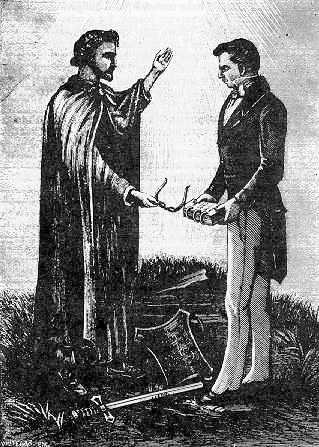
source
Starting in the 1820s, Smith had found occasional work as a scryer (like a crystal-ball reader), using “seer stones” to locate buried treasure or lost objects for the locals. He reportedly would put a seer stone in a white stovepipe hat (to block the light), and the information would appear to him in the stone’s reflections. That experience came in handy, as he used the exact same method to translate the golden plates, which were reportedly in an unknown language.
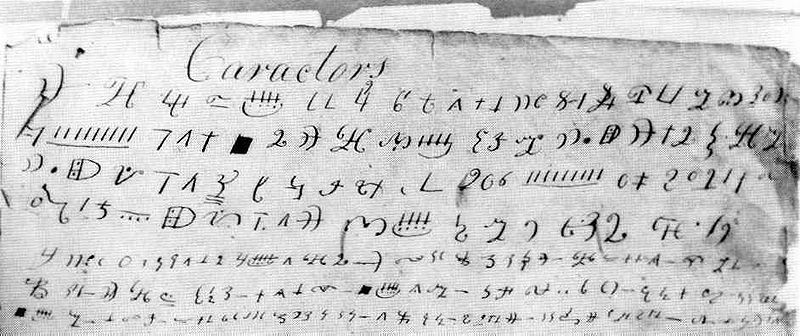
source
From 1827 to 1829, Smith translated the plates, placing inside a hat his favorite seer stone (an egg-sized chocolate-colored one he had found in digging a well), or sometimes placing in the hat “Urim and Thummim,” a pair of spectacles provided by Moroni with seer stones for eyepieces. (Urim and Thummim are also the names of mysterious objects used in divination by Moses and other ancient Hebrews). Smith did not physically use the golden plates in doing the translation.
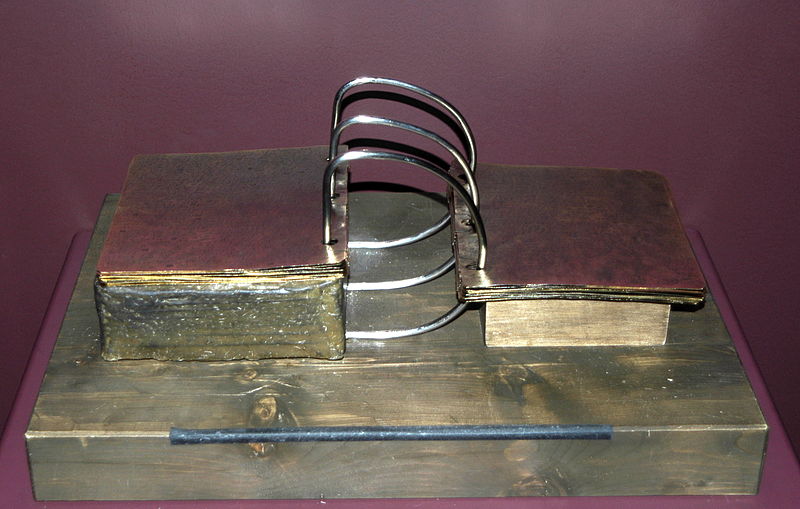
source
After the manuscript was finished, one of his scribes borrowed, and lost, 116 pages of it (some say the scribe’s wife stole them), but Smith refused to re-translate those pages, eventually having a revelation from God (Mormons believe their leaders get revelations from God) that he should not re-translate them because his opponents would be watching for any differences from the original pages, although he said he believed there would not be any differences. According to Smith, the angel Moroni was so peeved about the lost pages that he took back the golden plates and Urim and Thummim for several months.
The angel Moroni had made Smith promise not to show the plates to anyone without his permission, and also required that Smith return the plates to him when the translation was finished. Thus, there was a fair amount of skepticism as to their existence, which Smith partially dealt with by letting some people feel the plates through a piece of cloth, and, eventually, by taking a select 11 people to view them and attest to it.
Joseph Smith’s translation of the golden plates became, after copy-editing, the Book of Mormon, which reportedly was engraved on the plates by prophets Mormon and Moroni (Mormon’s son), circa 400 CE. Smith called the Book of Mormon “the most correct of any book on earth, and the keystone of our religion.” The story of the golden plates is very, very weird; read about it in detail here. The story of Smith’s meeting with God and Jesus, and stories of his interactions with Moroni are detailed in Smith’s writing (accepted as part of the canon by many Mormons) called Pearl of Great Price in the section called Joseph Smith—History.
In 1844, after years of adventures, Smith’s followers turned on him as being a megalomaniac who was spouting unacceptable doctrine and trying to steal their wives, leading to his arrest and murder in Nauvoo, Illinois. Although five men were tried for his murder, they were all acquitted.
Not long before Smith died (and probably contributing to his death), he had instituted the revealed doctrine of polygamy, which his successor, Brigham Young, put into practice after leading the Mormons to Utah. All except fundamentalist Mormons eventually set aside the practice of polygamy, since they recognized it was incompatible with Mormonism continuing to exist in the United States. (Otherwise, presumably, they’d still practice it, since it’s in their scriptures.)
The Mormon concept of how things work before we’re born and after we die is more New-Age-y than Christianity, with spirits making a pact with God to come down to Earth and be human. And Mormon hell (called “spirit prison”) is only a temporary stop before resurrection. Here’s the Mormon Salvation Plan in a nutshell:
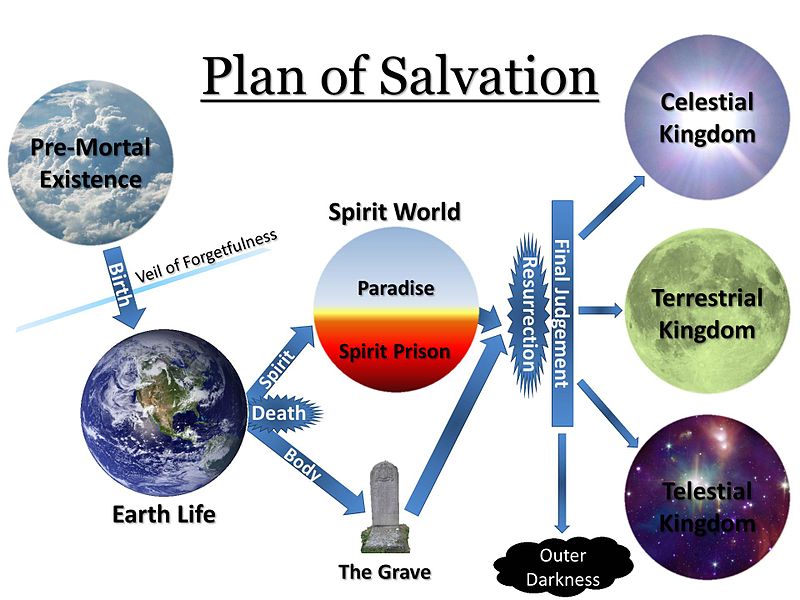
So—are Mormons Christians? Broadly speaking, yes, in that they believe in Jesus Christ and his teachings; they believe that he is the path to salvation, and will appear at the Second Coming. But the Jesus they believe in is in large part a different Jesus, on a different continent, part of a religion with “better, truer, more correct” teachings than any other version of Christianity—all other versions are “an abomination in his sight.” So—correct me if I’m wrong—unless you’re a Mormon, you’re not a true Christian; in fact, you’re abominable in the eyes of God.
The proper question from the Mormon point of view may not be “Are Mormons Christians?” but instead “Are Christians Mormons?”
